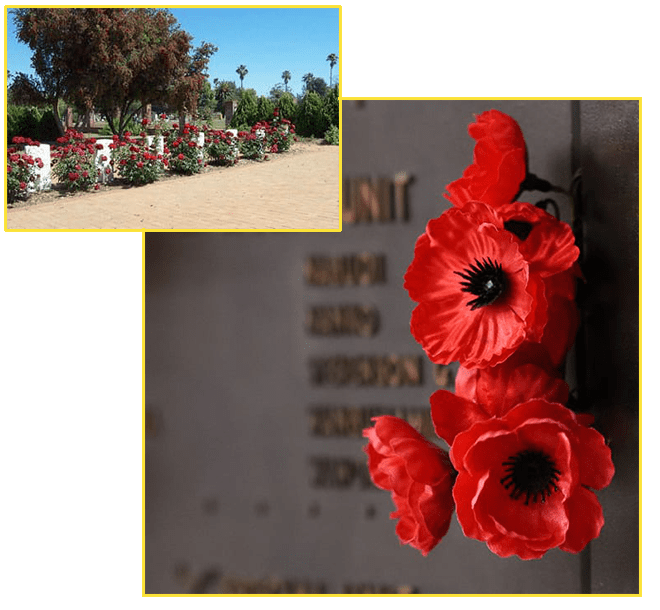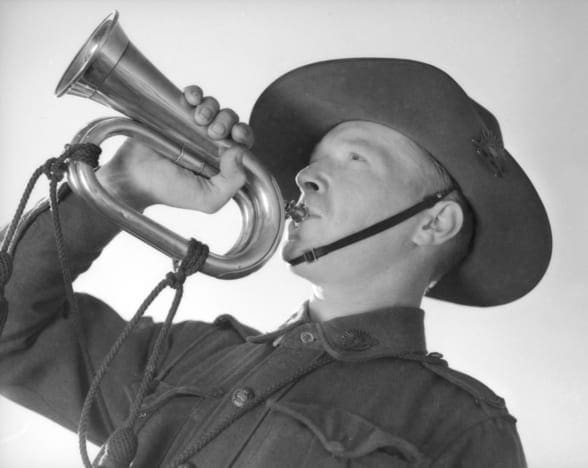
“They shall grow not old, as we that are left grow old; Age shall not weary them, nor the years condemn. At the going down of the sun and in the morning, we will remember them.” Lest we forget
Narromine Anzac Day
- Dawn Assembly: 5.20 am
- Dawn Service: 5.30 am
- War Cemetary Assembly: 9.20 am
- War Cemetary Service: 9.30 am
- Anzac Day March: 10.40 am
- Anzac Day Service:11am
2015 commemorated the 100 years milestone since the landing in Gallipoli. The Community attended in droves on this hallmark occasion. Both young and old were present to honour the fallen and returned servicemen. Dawn Service: Last years Dawn Service began with a large crowd gathering at the War Memorial to hallmark the 100 year anniversary. The Cenotaph in the centre of town has stood as a shrine of rememberance since 1924. Following the Dawn Service a free breakfast is hosted by the USMC.
NARROMINE WAR CEMETARY MEMORIAL SERVICE
Unfortunately for locals, relatives of servicemen and woman who lost their lives during various times of war have very few local funerary grounds located in the township of Narromine.
Many servicemen were regrettably buried in other countries and sadly their resting places remain unmarked amongst the confusion and chaos that ensued during the conflict.
Plaques displayed at Narromine Cemetary explain that Narromine was the wartime location for No 5 Elementary Flying Training School, RAAF. This small war cemetary contains the graves of 8 RAAF, 1 RAF and 3 Army personnel, some of whom died in training accidents. A further 5 RAAF personnel are buried in the adjoining General Cemetary.


MAIN SERVICE:
Narromine residents have a long history of inscription to military services. Two hundred and fifty-one servicemen have been recorded as naming Narromine as their place of association and 48 of those paid the ultimate sacrifice. Students from local schools were present and each placed a poppy at the Cenotaph.
The Anzac tradition:
The ideals of courage, endurance and mateship that are still relevant today was established on 25th April 1915. As the Australian and New Zealand Army Corps landed on the Gallipoli Peninsula. This hallmarked the start of a campaign that lasted eight months and resulted in an estimated 25,000 Australian casualties that were killed or died of wounds and/or disease.
The men and woman who served on the Gallipoli Peninsula created a legend, adding the word ‘Anzac’ to our vocabulary and creating the notion of the Anzac spirit. By the 1920s, Anzac Day ceremonies were held throughout Australia. In the ensuing decades, returned servicemen and women from the conflicts in Korea, Malaysia, Indonesia, Vietnam and Iraq as well as veterans from allied countries and peacekeepers joined the parades.
DAWN SERVICE ORIGINS
The Dawn Service observed on Anzac Day has its origins in an operational routine which is still observed by the Australian Army today.
The half-light of dawn plays tricks with soldiers’ eyes and upon the arrival of the sun. Easterly facing forces were at a disadvantage from the glare of the rising sun. From the earliest times the half-hour or so before dawn, with all its grey, misty shadows, became one of the most favoured strategic times for an attack.
Because of the disadvantage in vision from the rising sun, soldiers in defensive positions were required to be woken up in the dark. Soldiers awoken before dawn meant that by the time the first dull grey light crept across the battlefield they were awake, alert and manning their weapons. This was and still is known as ‘Stand-to’. The ‘Stand-to’ was then repeated at sunset.

